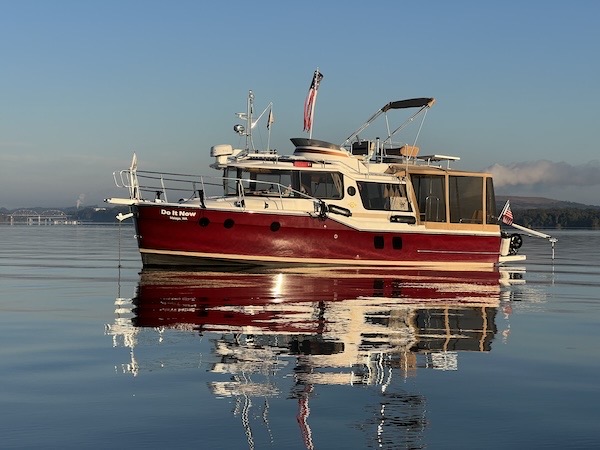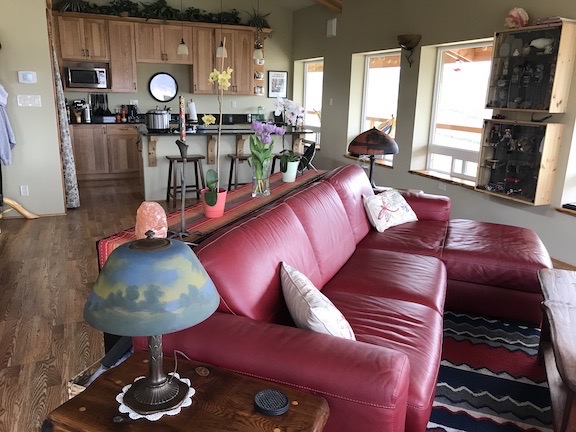Understanding how your investment transactions affect the market.
I really didn’t think a post like this was necessary, but after speaking with two different people about portfolio management in these troubled economic times, I realized that the average investor doesn’t have a clue about what a mutual fund is and how it works.
A Transfer is not Just a Transfer
Conversation One went like this:
Him: I’m thinking about transferring my Fidelity balances to bonds or t-bills.
Me: Don’t sell when the market is low.
Him: I’m not selling. Fidelity has bond and t-bill funds. I’m just transferring. When the market starts coming back, I’ll transfer back.
Conversation Two was remarkably similar:
Her: This week, I transfered all my mutual funds to a money market account.
Me: You sold your mutual funds? Now? When the market is in the toilet?
Her: No, I didn’t sell them. I just transferred them from one Putnam account to another. When the stock market starts going back up, I’ll just transfer the money back.
What followed was my attempt to explain that the “transfer” was, in reality, the sale of one mutual fund for the purchase of another. In both instances, my loved ones — yes, they are both related to me — were selling shares in a mostly stock-based mutual fund that had taken a beating with the Dow’s plunge and using the meager proceeds to invest in a different mutual fund based on less volatile (or more conservative) investment types with the same investment firm.
They didn’t see it this way because they mistakenly think that they are invested in the investment company: Fidelity, Putnam, Janus, Dreyfus, etc. They don’t understand that each mutual fund really consists of huge investments in regular publicly traded companies like GM, Washington Mutual, AIG, and countless other firms that have yet to hit the news. When they sell shares of a mutual fund that includes investments in, for example, GM, they are effectively selling GM stock. If everyone is selling, the price goes down.
Panic Feeding the Decline
Clearly, investors are the ones causing the stock market decline. Their panic sales are what’s driving down the prices, thus feeding the panic. The worse the prices get, the more people panic. Every one who cashes out — even by transferring stock based mutual funds to money market funds — is making the situation worse.
Take, for example, GM. On october 12, 2007, its shares were selling for $42.64 each. Although share prices declined slowly throughout the year, the panic of this past week really hit home. On Friday, GM shares closed at $4.89. You can see the decline in this chart:

Let’s look at the reality of this. According to market valuation of GM stock, GM lost nearly 89% of its value in a year. What happened? Did a UFO hover over a few GM plants and suck them into the sky, leaving a gaping hole? Did GM inventory get spirited away by pixies in the middle of the night? Were all of GM’s cash reserves shredded for some kid’s hamster cage? Were GMs huge asset investments in equipment scrapped for their recycling value?
Of course not. GM’s company value is not just 11% of what it was this time last year. While the original stock price may have been inflated — I can’t say because I’m not an analyst and have not studied GM’s financial statements — there’s no way in hell that the company can be worth a tenth of what it was twelve months ago.
But do investors believe that GM’s total value has declined by 89% in a year? I don’t think so. I believe they’re just panicking, trying desperately to save their finances by cutting their losses. They’re running — screaming that the sky is falling — away from stocks and the declining mutual funds that are based upon their values. As a result, they’re causing much of the mayhem.
More About Mutual Funds
My personal portfolio has declined in value by at least 40% in the past year. I can’t tell you the exact amount. I haven’t looked since Monday. I’m afraid to.
My portfolio includes my retirement funds. And yes, most of them are mutual funds. Most of them were doing very well — one was posting consistent gains of 25% a year and had doubled in value in five years. Like most Americans, I’m a lazy investor. Why do all my homework to handpick investments and then watch them from day to day when an investment firm has experts who can do that for me?
But at least I have an idea of what’s in my mutual funds. Fund names often have a clue. For example an S&P 500 fund is directly tied to the securities that make up the S&P 500. If the S&P 500 goes down 5 points, so does my fund. Pretty simple, right? Another fund name might include the words “Small Market Cap.” That fund is invested in stocks of small market capitalization companies.
Let’s say, for example, that Maria’s Big Cap Fund includes investments in 10 stocks named A – J. (In reality, it would likely include investments in far more securities, but this is a simple example.) Let’s also say that 1 share of Maria’s Big Cap Fund consists of one share each of companies A – J. When I sell a share of Maria’s Big Cap Fund, I’m selling 10 shares of stock — one each in companies A – J. If I have 500 shares of Maria’s Big Cap Fund and I “transfer” my investment to Maria’s Great Money Market Fund, I’m really selling 500 shares each of companies A – J and buying the equivalent dollar value investment in a money market.
Now say that Maria’s Big Cap Fund is really popular and there are 50,000,000 shares of it held with investors. As those investors panic and “transfer” or sell their shares in Maria’s Big Cap Fund, they’re really selling lots and lots of stock. As stock is unloaded in bulk, its value decreases. As value decreases, its price goes down.
This is part of what’s making the stock market so screwed up right now.
No Loss Until Sold
But what’s worse is that many investors are unnecessarily taking losses on their investments. They bought at one price and, as prices drop, they may be selling at a lower (or much lower) price. That’s a loss.
But if they held onto their investments and didn’t sell (or “transfer”), they wouldn’t have a loss — at least not yet. Sure, it would look horrible on their account statements or in Quicken or on whatever online service they might use to track investment value. But until the stock is sold, there is no loss.
I need to say that again, in some different words for those who might not have understood the previous words:
If you do not sell your stock, you do not lose any money.
You can argue this all day long but you will not win. A loss is only on paper until the sale is made. Paper losses aren’t worth the paper they’re printed on. (Pun intended.)
Remember “Black Monday” in 1987? At the time, it was the largest one-day percentage decline in stock market history. Remember when the dot-com bubble burst? Wikipedia even has an exact date for it: March 10, 2000. How about the market right after September 11, 2001? These are just three examples of disaster in the stock market.
But guess what? In each case, the market rebounded. Sure, a bunch of companies were shaken out of existence — primarily after about 50% of the dot-com startups were revealed to be based on ideas that couldn’t generate enough revenue to warrant their market values. But the market that emerged after these disasters was stronger. Values for most “good investments” came back.
I’ve been actively investing in the stock market, through both individual stock purchases via an online brokerage firm and mutual funds. As I mentioned earlier, my entire retirement portfolio is in a variety of diversified mutual funds. I survived as an investor through the dot-com bubble burst — my investments recovered their value within two years. And I fully expect to survive as an investor from the current market madness.
Why? Because I’m not going to sell.
I’m lucky, in a way. Although I’m not a kid, I’m still 15 years away from minimum retirement age. I have time to let my portfolio recover.
Not everyone is that lucky. Some people are just getting ready to retire. Other people — like my mm and stepdad — are already retired and tapping into that investment nest egg to meet their financial needs every day. These people are pretty much screwed — unless the stock market rebounds in a hurry.
And the stock market simply won’t rebound if everyone panics and keeps selling.





